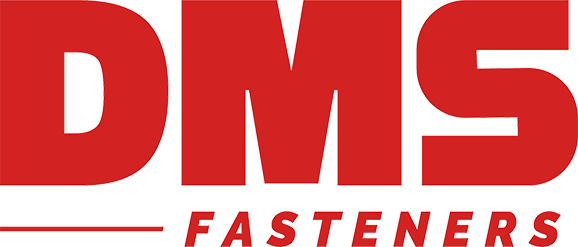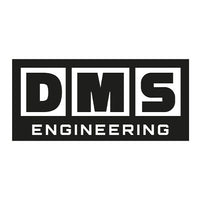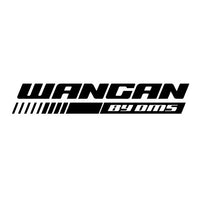
When it comes to fasteners, there is a seemingly endless variety available on the market, each designed for a specific application or to meet particular performance requirements. In this blog post, we will delve into the world of fastener head styles, exploring their unique characteristics and advantages. We will also touch upon the appropriate tools required for each style, ensuring that you're equipped with the necessary knowledge to make an informed decision for your next project.
- Flat Head Fasteners
Flat head fasteners, also known as countersunk head fasteners, are characterised by a conical-shaped head that sits flush with the surface of the material it is fastened to. This feature allows the fastener to provide a smooth, clean appearance, making it ideal for applications where aesthetics are a priority.
Typically, flat head fasteners are used in woodworking and metalworking, as well as in the assembly of furniture and electronics. The most common type of flat head fastener is the flat head screw, which can be driven using a variety of tools, including slotted, Phillips, Pozi, and Torx drivers, depending on the screw's drive type.
- Round Head Fasteners
Round head fasteners, sometimes referred to as button head or dome head fasteners, feature a rounded top that protrudes slightly above the surface of the material being fastened. These fasteners are ideal for applications where a larger bearing surface is required, such as in sheet metal or thin plastic assemblies, as the rounded head helps to distribute the clamping force over a broader area.
Commonly, round head fasteners are available in screw and bolt varieties, with slotted, Phillips, Pozi, and Torx drive options. While they may not offer the same flush appearance as flat head fasteners, round head fasteners provide a more substantial grip, making them a popular choice for many applications.
- Pan Head Fasteners
Pan head fasteners, similar in appearance to round head fasteners, have a slightly flattened top and cylindrical sides. The primary difference between the two lies in the height of the head, with pan head fasteners typically having a lower profile than their round head counterparts. This feature allows for a more streamlined appearance while still providing a larger bearing surface.
Pan head fasteners are widely used in applications where aesthetics are important, such as in consumer electronics and appliances. They are also a popular choice for assembling sheet metal and plastic components. Like other head styles, pan head fasteners are available in screw and bolt varieties, with various drive options, including slotted, Phillips, Pozi, and Torx.
- Socket Head Fasteners
Socket head fasteners, also known as Allen head fasteners, are characterised by a cylindrical head with a recessed hexagonal socket. They are designed to be driven using a hex key or Allen wrench, providing excellent torque transfer and reducing the risk of cam-out or stripping.
Due to their high torque capacity, socket head fasteners are frequently employed in applications where high clamping force or load-bearing capacity is required, such as in automotive, aerospace, and heavy machinery. Socket head cap screws and socket set screws are two common varieties of socket head fasteners.
- Hex Head Fasteners
Hex head fasteners, as the name suggests, have a hexagonal-shaped head, which can be driven using a spanner or an adjustable wrench. This head style is commonly found in bolts, as well as in some screw varieties. Hex head fasteners are known for their high torque capacity and ease of installation, making them a popular choice for heavy-duty applications in construction, automotive, and industrial settings.
- Square Head Fasteners
Square head fasteners, similar to hex head fasteners, have a square-shaped head designed to be driven using a wrench or a socket. They offer a few advantages over hex head fasteners, including increased wrenching area and reduced risk of rounding off the corners when applying high torque. However, square head fasteners are not as common as hex head fasteners and may be more difficult to source.
Square head fasteners are typically used in applications where high torque is required, such as in heavy machinery and industrial equipment. Additionally, their unique appearance can be an aesthetic choice in certain projects.
- Flange Head Fasteners
Flange head fasteners are characterised by an integrated flange or collar beneath the head. This flange acts as a built-in washer, providing a larger bearing surface to distribute the clamping force and reduce the risk of damaging the material being fastened.
Flange head fasteners are commonly used in automotive and heavy machinery applications, where a high clamping force is needed without causing damage to the material. They are available in various styles, including hex flange bolts, socket flange screws, and Torx flange screws, to suit different drive types and performance requirements.
- Wing Head Fasteners
Wing head fasteners, also known as wing screws or thumb screws, feature a head with two protruding "wings" that can be easily tightened or loosened by hand. These fasteners are ideal for applications where tools are not readily available or where frequent adjustments are required.
Wing head fasteners are commonly used in consumer electronics, such as computer cases, as well as in furniture assembly and other applications where quick adjustments may be necessary. They are available in various materials and sizes to suit different requirements.
- T-Slot Fasteners
T-slot fasteners are designed specifically for use in T-slotted aluminium extrusions commonly used in framing and machine guarding systems. These fasteners feature a head with a T-shaped profile that slides into the extrusion's slot and rotates 90 degrees to lock into place, providing a secure and adjustable connection.
T-slot fasteners are popular in manufacturing and automation applications, as well as in DIY projects where adjustable framing is required. They are available in various styles, including T-slot bolts, T-nuts, and T-slot studs.
Therefore...
Understanding the different fastener head styles is crucial when selecting the right fastener for your project. Each head style offers unique advantages, depending on the application and performance requirements. By considering factors such as torque capacity, bearing surface, aesthetics, and tool compatibility, you can make an informed decision and ensure the success of your project.



